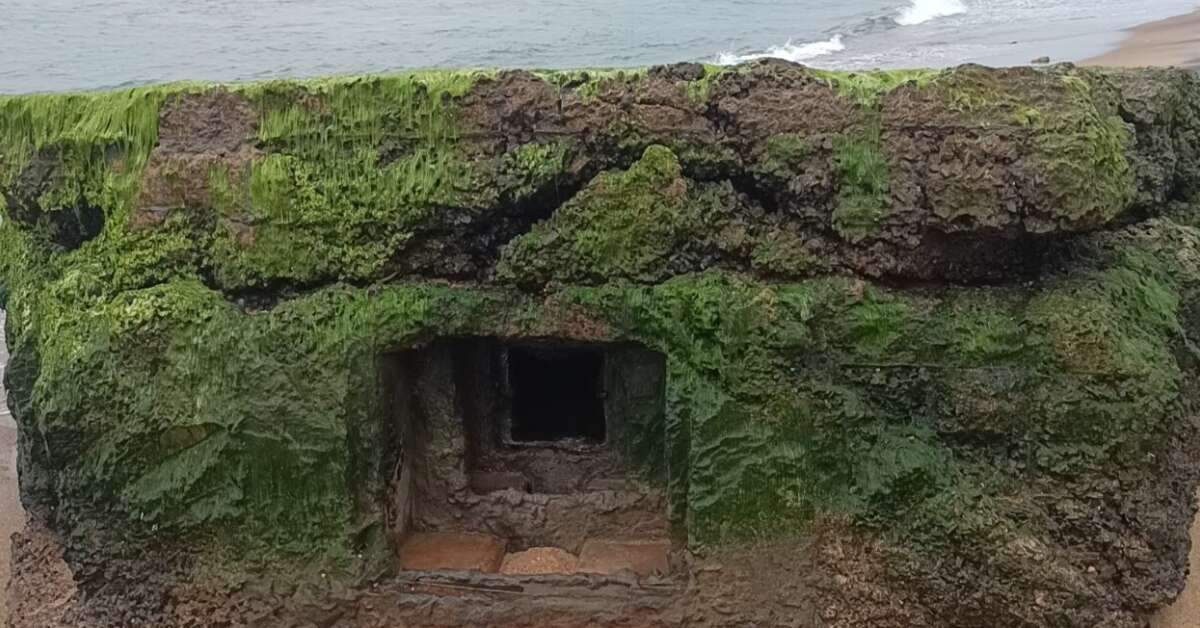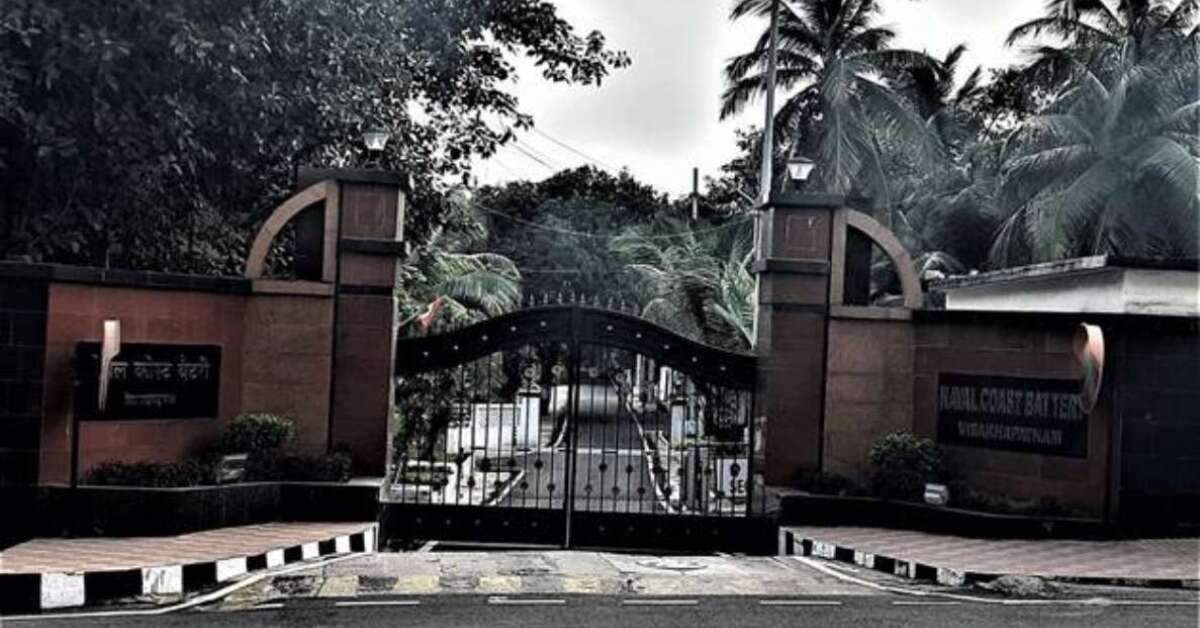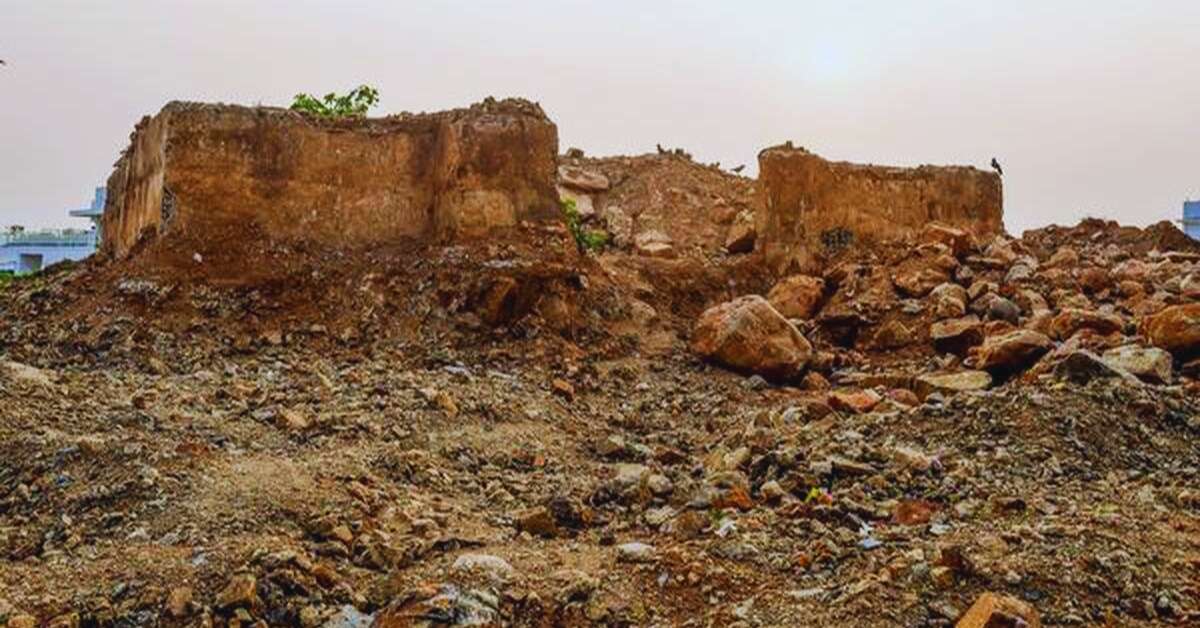Though often described as a peaceful fishing village, Visakhapatnam played an important role in one of the most brutal wars the world has seen: World War II. During this period, the city served as a strategic hub for British military operations in Southeast Asia. From fortified bunkers to submarines, traces of World War II are scattered in Visakhapatnam. Here are some of them:
1. Forgotten pillboxes on the shoreline

Sometimes, when Vizag’s shoreline recedes, these overlooked fragments of history make an appearance: World War II pillboxes or bunkers. These small fortified structures, buried for decades, were part of a defensive network built to guard against enemy invasions.
These pillboxes are equipped with loopholes through which weapons could be fired. The structures are speculated to have been constructed between 1938 and 1941. Four such pillboxes are still visible along the Vizag coast:
R K Beach: The most intact pillbox, spanning 20 to 30 feet wide and 10 feet high.
Kotaveedhi and Lavender Canal: Structures of similar dimensions.
Jalaripeta: The largest, used as a command centre by the British, now crumbling and beyond repair.
These fortifications were essential in resisting potential Japanese invasions as World War II intensified in the East.
2. The Naval Coast Battery

As a midpoint between Kolkata and Chennai, Vizag became critical for transporting wartime supplies to British territories in Southeast Asia during World War II. As it was an important location, attacks on the city were anticipated. To safeguard it, army, naval, and air force personnel began to arrive at Visakhapatnam in 1940, and they soon saw the need to set up a coastal battery here for protection.
The Army sought a strategic location along the seafront with an unobstructed view to establish the coastal battery, which would be critical for defending Visakhapatnam from potential sea-based threats. However, identifying an appropriate site posed a significant challenge for the civil administration, as much of the coastline was already occupied by fishermen’s settlements.
Eventually, a suitable spot was identified to the north of the old city. The fishermen residing there were forcibly displaced and relocated to higher ground south of the acquired area. This new settlement was named Kotha Jalaripeta, a name it continues to bear to this day.
Thus, the 5th Indian Heavy Battery was created in 1940, later renamed the 5th Indian Coast Battery. Two six-inch guns were installed near the seafront, and local fishing communities were relocated to form the settlement now known as Kotha Jalaripeta.
This coastal battery, managed by the Indian Army until 1964, was handed over to the Navy. It was then renamed the Naval Coast Battery, Visakhapatnam (NCB-V), it played a critical role during the 1971 war, ensuring the city’s security.
3. Fortifications on Daspalla Hillls

In 2020, workers clearing rubble near the Circuit House on Daspalla Hills stumbled upon thick concrete structures that defied their tools. On closer inspection, INTACH members Edward Paul and Mayank Devi identified the remains as World War II-era fortifications.
In a report by The Hindu about the incident, retired Lt Col Matthew Thomas suggested these were anti-aircraft or anti-ship gun batteries. Measuring 20×20 feet with 15-inch reinforced concrete walls, the structures likely housed a six- or four-gun battery. Strategically positioned, the site overlooks the Bay of Bengal and may have coordinated with beachside pillboxes to thwart enemy ships or aircrafts.
4. Remains of a Submarine

Just off Vizag’s coast, the waters tell their own wartime story. On February 12, 1944, the Imperial Japanese Navy’s submarine RO-110 was sunk near Rambilli, about 25 miles south of the city’s harbour. Tasked with targeting British supply vessels, the submarine was neutralized by depth charges from the HMAS Launceston and HMIS Jumna.
Each of these remnants—from battered pillboxes to submerged submarines—is a connection to the troubled World War II days of Visakhapatnam. In fact, the city has its own harrowing bombing episode from the era that still strikes a chord. You can read more about it here.
Stay tuned to Yo! Vizag website and Instagram for more city and news updates.










Discussion about this post